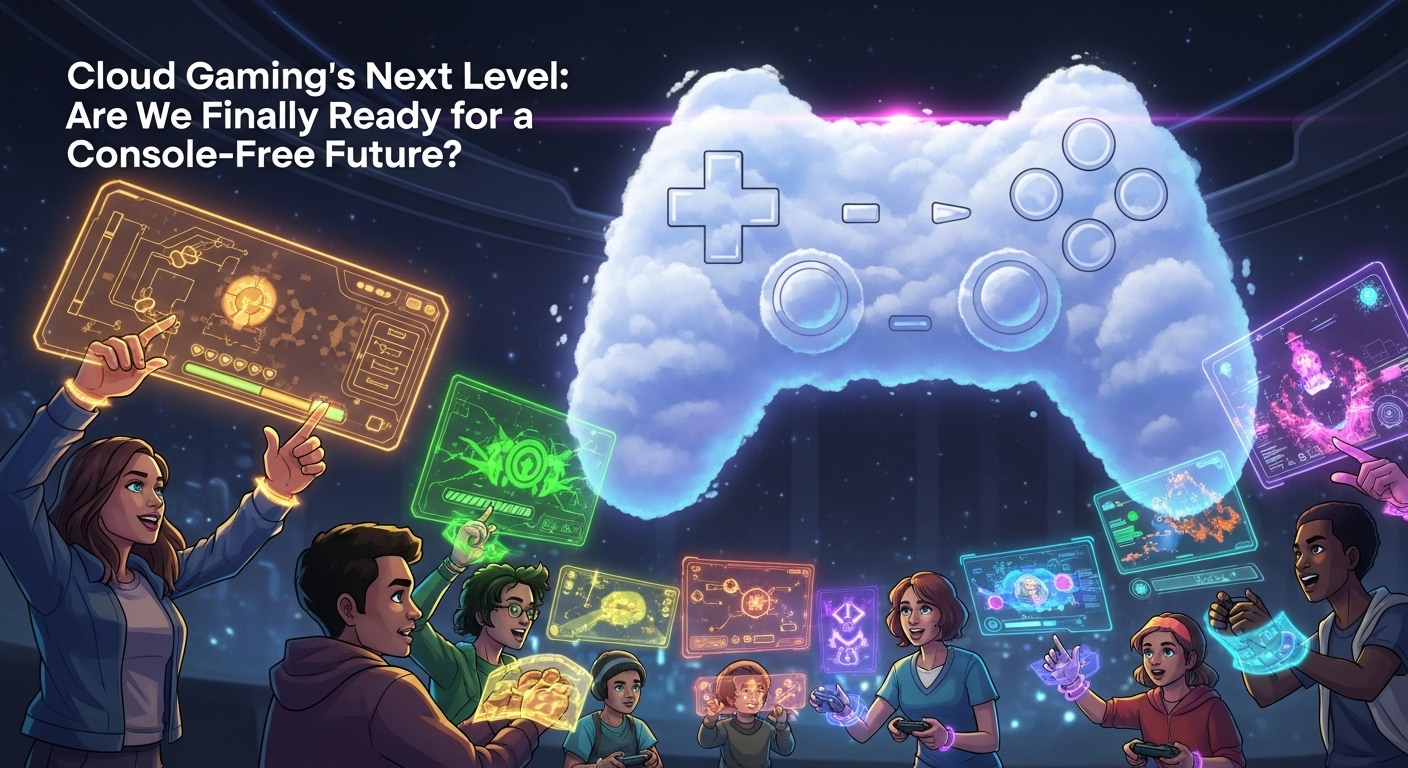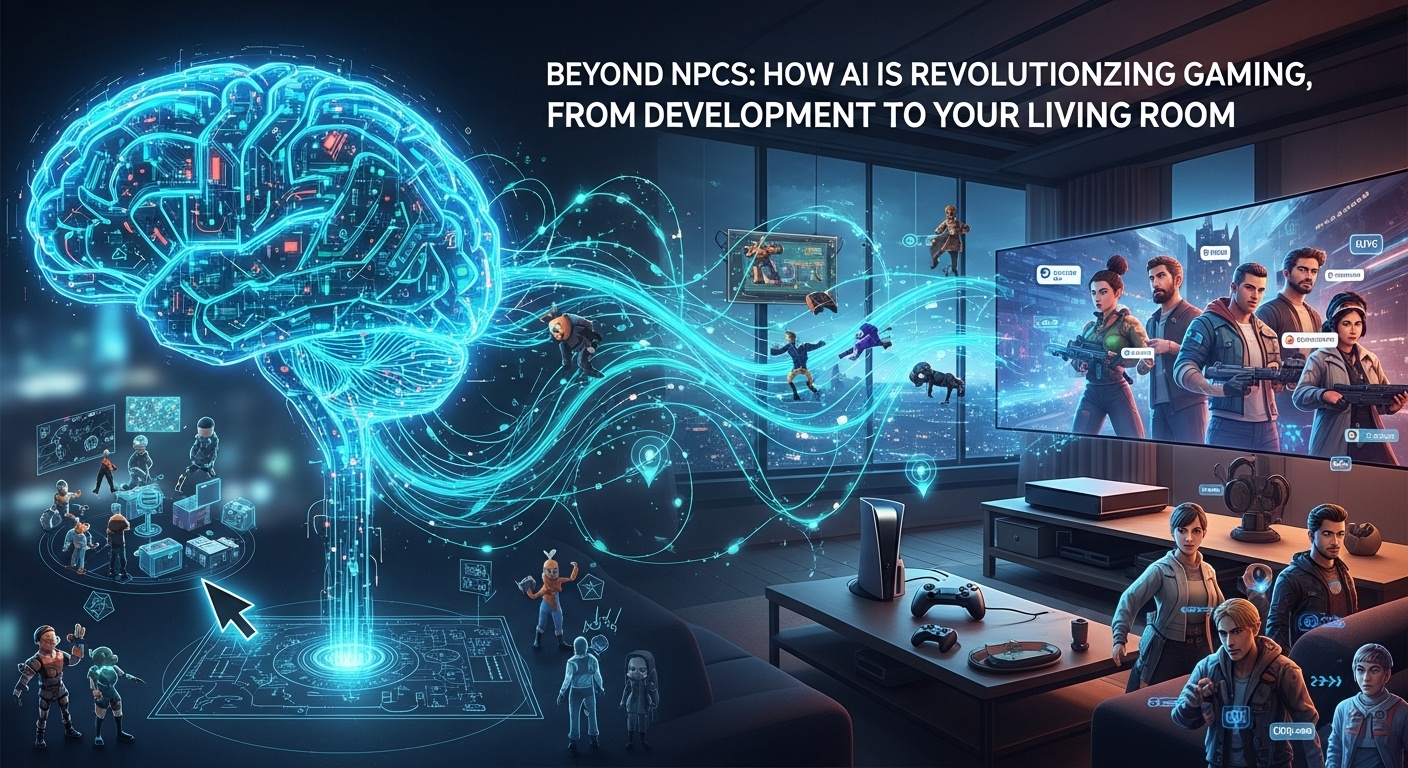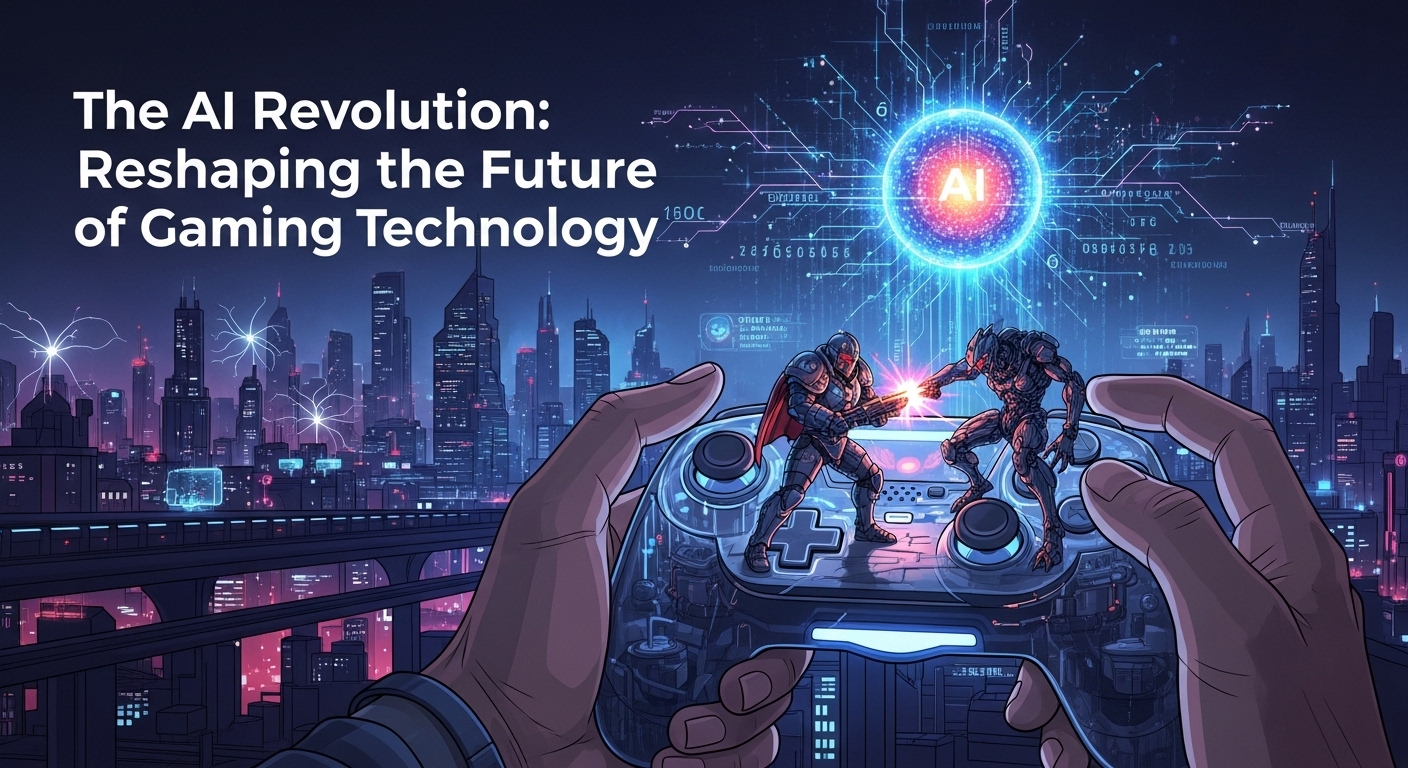The Persistent Dream of Gaming Anywhere, Anytime
For decades, gamers have shared a collective dream: the ability to play the most graphically demanding, triple-A titles on any device, anywhere, without being tethered to a bulky, expensive console or a high-end PC. Imagine booting up the latest open-world epic on your laptop during a lunch break, continuing your quest on your phone while on the train, and finishing the session on your smart TV in the evening, all seamlessly. This isn’t science fiction; it’s the promise of cloud gaming. For years, this promise felt just out of reach, plagued by lag, blurry streams, and limited libraries. But the landscape is shifting. A revolution in gaming technology is underway, and it’s time to ask the big question: Are we finally ready for a console-free future?
What is Cloud Gaming, Really? A Quick Refresher
Before we dive into the future, let’s establish a clear understanding of the present. At its core, cloud gaming is conceptually simple. Think of it like Netflix or YouTube, but for interactive entertainment. Instead of your local device (your console, PC, or phone) doing all the heavy lifting—rendering complex graphics, processing physics, and running game logic—that work is handled by a super-powerful server in a remote data center. This server runs the game, captures the video output, and streams it over the internet to your screen. Your controller inputs are sent back to the server in milliseconds, creating a seemingly local gaming experience. Major players like NVIDIA’s GeForce Now, Microsoft’s Xbox Cloud Gaming, and Sony’s PlayStation Plus Premium are now leading this charge, each with a unique approach to delivering this ‘game-streaming’ service.
The Magic Behind the Curtain
The appeal is undeniable. It decouples high-end gaming from high-end hardware. You no longer need to spend hundreds or even thousands of dollars every few years to keep up with the latest graphical advancements. As long as you have a decent screen and a stable internet connection, you can theoretically access a world of top-tier gaming. This democratizes the hobby, opening it up to a much wider audience who may have been priced out or intimidated by the hardware requirements of traditional gaming.
The Hurdles of the Past: Why Cloud Gaming Stumbled
If the idea is so brilliant, why isn’t everyone already gaming in the cloud? The initial attempts at cloud gaming, like OnLive over a decade ago, were ambitious but ultimately ahead of their time. They ran into several significant, almost insurmountable, roadblocks that soured the experience for many early adopters.
The Latency Monster
The most significant challenge has always been latency, or input lag. This is the delay between you pressing a button on your controller and seeing the corresponding action on screen. In a non-interactive video stream, a delay of a few hundred milliseconds is unnoticeable. In a fast-paced action game, it’s the difference between a perfectly timed parry and a frustrating death screen. Early services struggled to minimize this lag, making many genres, especially first-person shooters and fighting games, feel sluggish and unplayable for serious gamers.
Bandwidth Blues and Data Caps
Cloud gaming is incredibly data-intensive. It requires a fast, stable, and consistent internet connection to maintain a high-resolution, high-framerate stream. A decade ago, widespread fiber-optic internet was a luxury, and many households were still on much slower DSL connections. Furthermore, the rise of internet data caps meant that a few hours of 1080p game streaming could consume a significant chunk of a user’s monthly data allowance, making it an expensive proposition beyond the subscription fee.
The Library Problem
Content is king, and early cloud services had a kingdom problem. Their game libraries were often small and lacked the latest blockbuster titles. There was also the thorny issue of ownership. With services like Google Stadia (now defunct), you had to buy games specifically for that platform, which would become inaccessible if the service ever shut down—a fear that ultimately came true. This created a huge barrier for players who had already invested heavily in ecosystems like Steam, PlayStation, or Xbox.
The Tides are Turning: What’s Different Now?
Fast forward to today, and the situation has dramatically improved. The key hurdles of the past are being systematically dismantled by incredible advancements in infrastructure and gaming technology, making the dream more viable than ever.
Infrastructure is King: The Rise of 5G and Fiber
The single biggest game-changer has been the global improvement in internet infrastructure. The widespread rollout of fiber-to-the-home provides the low-latency, high-bandwidth connections ideal for cloud gaming. Simultaneously, the advent of 5G mobile networks is revolutionary. It promises fiber-like speeds and low latency wirelessly, finally making high-quality gaming on the go a real possibility, not just a marketing gimmick. This foundation is crucial; without it, none of the other advancements would matter.
Smarter Streaming Technology
The software and hardware powering these services have become exponentially more sophisticated. Companies are investing heavily in advanced video compression codecs like AV1, which can deliver higher quality video at lower bitrates, easing the strain on your internet connection. More importantly, they are leveraging AI and machine learning. NVIDIA, for example, uses predictive AI to anticipate player actions and reduce perceived latency. This cutting-edge gaming technology works behind the scenes to make the stream feel more responsive and closer to a native hardware experience.
Big Tech’s Big Bets and Better Business Models
Unlike the early pioneers, the current leaders in cloud gaming are tech giants with deep pockets and established ecosystems. Microsoft has masterfully integrated Xbox Cloud Gaming into its Game Pass Ultimate subscription, giving millions of players access to a vast, rotating library of games they can play on their console, PC, or in the cloud at no extra cost. NVIDIA’s GeForce Now takes a different approach, allowing you to stream games you already own on platforms like Steam and the Epic Games Store, solving the ownership dilemma. This level of investment and integration legitimizes the market and fosters healthy competition, which drives innovation and benefits consumers.
The Console-Free Dream: Is It Within Reach?
So, with all these improvements, can we finally ditch the box under our TVs? The answer is nuanced: it depends on who you are as a gamer.
For the Casual and Adventurous Gamer: A Resounding Yes
For the vast majority of players—those who love sprawling single-player RPGs, story-driven adventures, and casual multiplayer games—cloud gaming is already an incredible proposition. The convenience is unmatched. Being able to try a new Game Pass title instantly without waiting for a 100GB download is a magical experience. For families, it means access to a library of games without needing multiple consoles. The latency is now low enough that for most genres, it’s practically unnoticeable to the average player. For this demographic, a console-free future is not just possible; it’s already here for the taking.
For the Hardcore Competitor: Not So Fast
However, for the esports professional or the highly competitive FPS and fighting game enthusiast, local hardware is still king. In a world where a single frame can determine the outcome of a match, even the few milliseconds of latency inherent in cloud gaming can be a disadvantage. While technology is closing the gap, the raw, instantaneous response of a powerful local PC or console remains the gold standard for competitive play. For these players, the future is likely hybrid, not entirely cloud-based.
Conclusion: The Future is Streaming, But The Journey Continues
The era of cloud gaming is no longer a distant future; it is a compelling and rapidly maturing present. The technological barriers of latency and bandwidth that once crippled the experience are being eroded by the relentless march of 5G, fiber internet, and intelligent streaming algorithms. The question is no longer *if* cloud gaming will be a major force in the industry, but *how* it will reshape it. While we may not be at a point where every single gamer is ready to throw their console away, we are undeniably at a tipping point. The console-free future is dawning, offering unprecedented freedom and accessibility. For many, that future has already arrived. What about you? Have you taken the plunge into cloud gaming? Share your experience in the comments below—we’d love to hear if you think the world is ready to play without limits.


